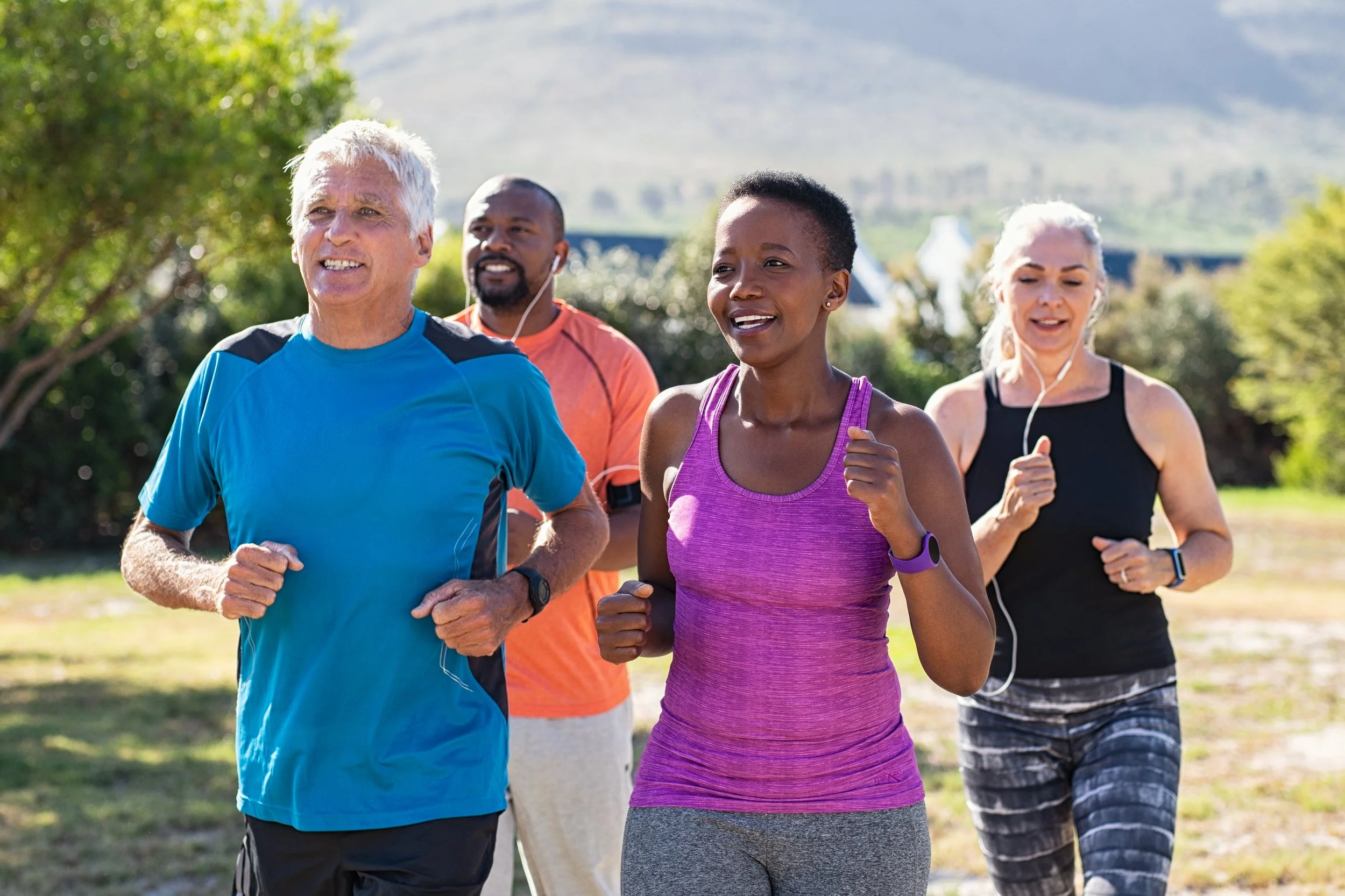The science of exercise
Regular physical activity is one of the most effective ways to improve nearly every marker of health — physical, mental and metabolic. It boosts your energy and mood, protects your brain, supports sleep, and dramatically reduces your risk of chronic disease, including most of the common cancers.
The 30-minute Rule
We get it — it's hard to make exercise a non-negotiable. And while lifting groceries and walking around at work count as incidental activity, they’re not enough alone.
Instead, finding 30 minutes a day to do some intentional, sustained movement delivers the real metabolic, musculoskeletal and mental benefits.
Exercise that gets your heart pumping for a sustained amount of time has many more significant health benefits than the ‘incidental’ kind, although both are important.
Scheduling in a time to exercise with a friend both improves your chances of getting that exercise block in, contributing to creating a habit and improves social connectedness.
Why Steps Count
You don’t need to be a marathon runner to protect your health—every step counts.
Many people find that using a smart watch or pedometer that tracks your steps is good motivation to get over the recommended 7000 steps a day.
>7000 steps a day is linked with:
Lower death from any cause
Reduce risk of heart and metabolic disease
Improved mental health
Healthier ageing.
Aiming for 10,000 steps offers even greater benefits, particularly for those aiming to lose weight or to prevent chronic conditions.
🔗 You can now link your wearable data to the Thrive Dashboard to automatically update your scores if you’d like a bit of extra motivation.
Not all Movement is Created Equal
To build a strong, resilient, and energised body, it's important to move in a variety of ways. Each type of exercise plays a unique role in protecting your long-term health, improving function, and helping you feel your best.
From heart-pumping workouts to mobility and core strength, these five forms of movement work together to reduce your risk of chronic disease, injury, and burnout.
Before diving into high-intensity or heavy strength workouts, it’s crucial to grade up gradually. Your body needs time to adapt to new loads and demands.
Whether you’re starting from scratch or returning after time off, avoid going from zero to marathon overnight. Jumping too fast into intense training increases the risk of injury, burnout, or heart complications.
Top safety tips:
Start low, go slow – Begin with lower intensity or lighter weights and build up over weeks.
Warm up properly before any intense effort.
Listen to your body – fatigue, joint pain, or dizziness are signals to slow down.
Prioritise form over intensity – correct technique helps avoid injury.
Consult your GP or exercise physiologist if you have a chronic condition or haven’t exercised in a while.
Think of exercise like medicine—the right dose at the right time delivers the best results.
Cardio
Walking, jogging, cycling, swimming or dancing — anything that keeps your heart rate elevated.
✅ Linked to lower blood pressure, better mood, improved sleep, brain and metabolic health and weight management.
Resistance Training : Don’t Skip It
Lifting weights, resistance bands, or bodyweight moves like squats or push-ups 2-3 times a week helps maintain:
✅ Metabolic health, muscle mass, bone density as well as injury prevention.
High Intensity Interval Training (HIIT)
Short bursts of high effort followed by recovery (e.g. 30 30-second sprint then one-minute walk) repeated over 15-20 minutes can be useful if you’re short on time.
✅ Regular HIIT is linked with improved cardiovascular fitness and metabolic health and boosts fat metabolism.
Flexibility & Mobility: Move Well, Age Well
Dynamic stretching, yoga, Pilates and mobility drills.
✅ Supports joint health, reduces stiffness, and prevents falls and injuries — especially important after age 40.
Bonus: great for stress and nervous system regulation.
High Impact & Strong Bones
Activities like jumping, skipping, or jogging stimulate your bones to stay strong.
✅ Essential for maintaining bone density and reducing fracture risk, especially in postmenopausal women and older adults.

